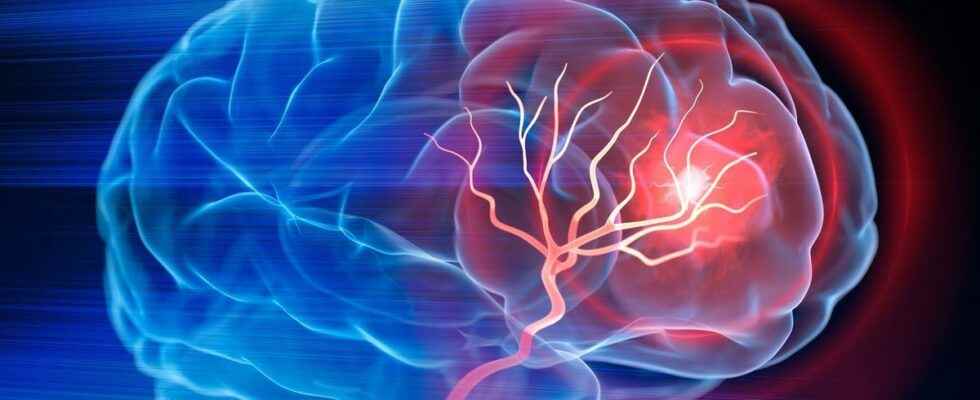Published on
Updated
Reading 3 mins.
An international study has pinpointed an interesting piece of data concerning stroke and its management. According to her, severe cases of stroke, often considered too risky to undergo a thrombectomy, would on the contrary greatly benefit from this procedure.
Drug treatment or vascular thrombectomy? When a person has a stroke, the question quickly arises. Endovascular thrombectomy is a procedure that allows the mechanical retrieval of a clot blocking blood flow in an artery. Recognized as effective for cerebral vascular acids, it is however excluded from the most serious cases, considered too risky. But a large study called SELECT 2 involving 31 medical centers in North America, Europe, Australia and New Zealand presented Friday February 10 in the New England Journal of Medicine contrary results that could change and improve the management of these strokes.
Results so convincing that the study was stopped before the end
The study targeted 560 patients with large artery occlusion causing significant stroke on CT or advanced imaging. But the results were so significant that the data and safety monitoring committee stopped the trial after enrolling 352 patients, because of the superior results seen with thrombectomy.
A total of 352 patients were randomly assigned to one of two groups: 178 received thrombectomy and 174 received medical management. Patients who were seen before 4.5 hours after stroke onset received clot-busting drugs TPA or TNKase if eligible. The results obtained were unexpectedly very encouraging:
- 20% of patients who underwent thrombectomy were left with functional independence, returning to family, society as almost normal or not in need of support, compared to 7% for medical treatment only;
- Nearly 40% of patients end up moving around independently.
The results, conducted in different countries, offer real hope for better recovery after a stroke, even considered serious. “This is a huge improvement in those severe stroke patients who are not being offered treatment at this stage.” confirms Dr. Sarraj, who recalls that a significant number of them end up with very poor results “in a wheelchair, bedridden or dead”.
Towards a change in stroke management
On the French side, the trial also represents a hope of better understanding stroke patients in the near future. Contacted by Doctissimo, Professor Sonia Alamowitch of the Cerebrovascular Emergency Department at the Pitié-Salpêtrière Hospital is very interested in these trials:
“Until now, we were powerless in front of patients with severe stroke, with significant deficit and ischemia, i.e. extensive cerebral suffering on the cerebral image, because these were not included in therapeutic trials. . The fear was that there were far more risks than benefits in performing a thrombectomy”.
Today’s study, however, may change practice in the near future.
“I do think that it will change our practices. This is the third essay of this kind, 3 essays which despite their differences and the different fields of analysis (West, Japan, China, etc.) go in the same direction and bring the same conclusion. Patients treated by thrombectomy are doing better and doing better. Other trials are currently underway, which will allow us to know when to stop the analyzes and when to include this in our practices”.
Stroke: signs to know to act quickly
As a reminder, in France alone, approximately 123,000 people per year are hospitalized for a stroke. Strokes are an important cause of disability and are one of the leading causes of death.
Certain symptoms in particular should prompt you as a victim or witness to quickly contact the emergency services:
- A deformation of the mouth, an asymmetrical smile;
- Weakness on one side of the body;
- Speech disorders.
All accompanied also by vision disorders, headaches, balance disorders: it is important to contact the Samu without delay, i.e. on the 15th.
